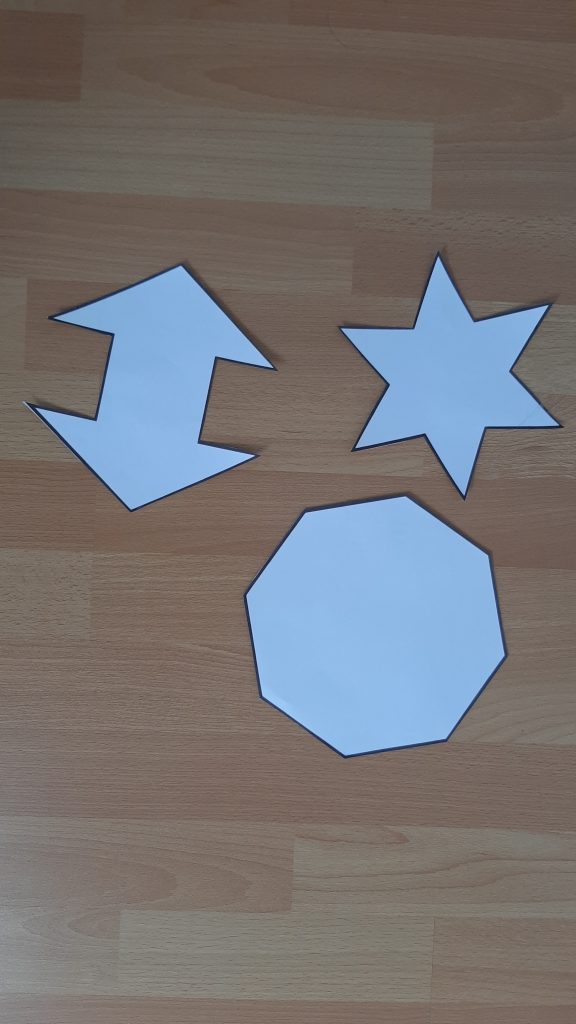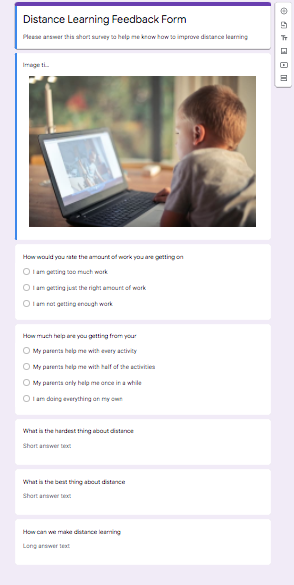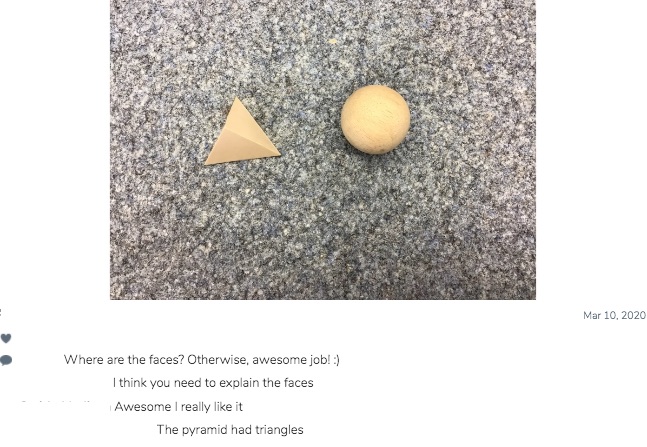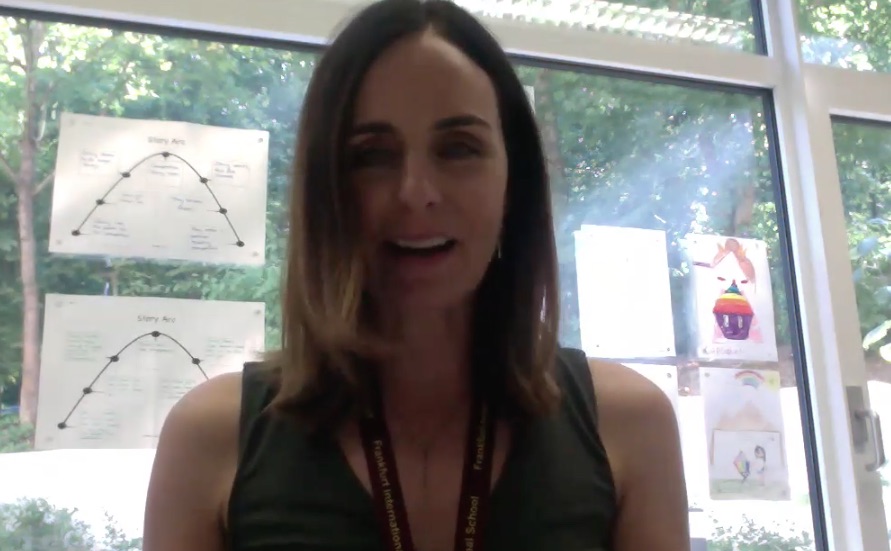Assessment and Distance Learning
In this new dawn of distance learning, teachers have many questions, not the least of which is: Am I still delivering the best possible instruction to my students? Tangent to this is the question: How do I know whether I am still delivering the best possible instruction? The simple answer to that question is: Assessment. But making effective, meaningful assessment function in a digital learning environment seems to be anything but simple. There are so many new factors we need to consider when designing and administering assessment online. Firstly, what form does it take? Paper assessments are out of the question. Big, summative projects are fine, but we won’t be there to guide them every step of the way, and help them reflect. This leads to another question: Does the form of the assessment match the content and the desired outcomes? This is easy to resolve in a classroom environment, as we can choose from a wide range of possibilities, however, online learning limits our choices. An additional concern is whether or not students are completing the assessment on their own, or whether they’re getting help. Once the assessment leaves the four walls of the classroom we have no control over how it’s handled.
“I actually see this as an opportunity; an opportunity to weed out the unnecessary and time-consuming aspects of assessment, and pare things down to the real, essential approaches which will make assessment quick, easy and accurate”.
So, what is clear is that we are going to have to rethink the way we do assessment right now. This isn’t to say that we should completely reinvent the wheel; nobody has time for that, nor do we need to. Not to mention, this distance learning thing won’t last forever. As hard as it may be to believe it, we will be teaching in regular classrooms again in the near future. Therefore, I’m not suggesting we think of assessment differently. I’m suggesting we should think carefully about how we can use what we know about assessment already in order to elicit the best possible understanding of our students’ grasp of instruction in a digital learning environment. And key is that it remains SIMPLE. If every other teacher’s life is anything like my life then it involves a full day of recording videos, assigning tasks, checking tasks, and having Zoom meetings, all while tending to my own family and personal business. I cannot be spending hours developing assessment measures. I actually see this as an opportunity, an opportunity to weed out the unnecessary and time-consuming aspects of assessment, and pare things down to the real, essential approaches which will make assessment quick, easy and accurate. Therefore, I’ve put together a short menu of SIMPLE formative and summative assessment approaches that I feel lend themselves very well to distance learning, and which solve many of those challenges which an online learning environment creates:
- Keep it formative from the start
This was a suggestion from a colleague of mine. She designed a checklist on Google Sheets which we use to keep track of the assignments students have completed. This is useful in so many ways. Not only can you see which students are completing assignments, and which are not, so you can offer support to those students who seem to need it, you can also see if there was a specific activity that many students didn’t finish, or a day on which many students didn’t finish all assignments. This can help us reevaluate the types of tasks we are assigning and whether they are appropriate or comprehensible, as well as whether the amount of work we are assigning is achievable by the majority of our students. The important thing is that we use this information. If we see that students were unable to complete four assignments in one day, we can reduce it to three per day. If we notice that a good percentage of students didn’t complete the reading assignment, we can check in with the whole class, or just that group of students to determine what the roadblocks were; then we can plan follow-up instruction based on what we learn. Another idea (from the same colleague) was to give a value to each assignment completed. This could be a number value, a descriptor, a symbol of some sort, or a color, such as I used in my example here. These values indicate whether a student had a strong understanding of the concept, a developing understanding, or a beginning understanding. Of course, I then need to use this information to plan instruction. I wouldn’t suggest that teachers completely differentiate the activities they are assigning; that would be far too much work. But you can schedule a Zoom session with a small group of kids, assign mentors, or assign additional review to those students who need it. Adding values to your checklist is also going to be very helpful when it comes to reporting time. Of course, as you continue to work with students, you can go back and change the values to reflect their growing understanding, so that when you report you have an accurate picture.

2. Conferencing and interviews
One big challenge of distance learning is knowing whether students have been completing assessments on their own. This can easily be remedied through conferencing and interviews. Conferencing is familiar to anyone who does readers’ and writers’ workshop, but it can also be done with mathematics, social studies or science. Just prepare a few simple questions, and set up a conference time with a single student or a group of students. Below is an example of some questions which I asked students for our readers’ workshop unit on biographies. These were designed to identify different levels of understanding. Of course, I also created a recording sheet on which I could keep track of what the students were saying, and any notes that would help guide me as the unit continued.
Biography Questions:
1. What is the subject of your biography like? What are their traits? Can you give examples of this?
2. When/where did your character live? Can you tell me about that place/time?
3. What do you think is the big theme or message in this story?
This strategy also works for summative assessments. I once tried this out in the classroom for our unit of inquiry on natural resources. You can see some of my questions and the students’ answers below. Each ‘interview’ took about five minutes, but I gained a great deal of insight from how the students responded to the questions, and whether they were able to elaborate. So much non-verbal information is also communicated when you meet with students face-to-face. A final advantage is that you are assessing exactly what you want to assess, whereas paper and pencil assessments may be truly capturing their competency in reading and/or writing, and group projects may only reflect the efforts of the strongest member of the group.

3. Using Web Features to Assess
Many teachers are using Zoom right now, or a similar web-based platform, to hold meetings with students. These platforms have many features that allow you assess students quickly and easily. One feature on Zoom that I have gotten a lot of use out of is the polling feature. You can create a quick poll on any topic, and see the results of the poll in a spreadsheet. For example, I created a poll asking students which writing skill they would like to have a review of for our unit on Fairytales (see below). This helped me determine whether I needed to do another whole class lesson on a specific skill, or whether I should break the students into small groups and revisit various skills with those groups.

The chat feature can also be used to assess students quickly. Think of it as a mini-whiteboard exercise. I used this feature the other day to determine where my students were in their understanding of symmetry. I first did a quick review of symmetry using some cut-and-fold shapes. Then, I held up some shapes, one at a time, and asked kids how many lines of symmetry each one has. I told them to write their response in the chat. I was able to quickly see that most of my students understood the concept, but that several needed an extra review. I met with these students the following day.

Google also has many features that are helpful when assessing students during distance learning. Google Forms is one of those that I have used a lot. In the past I have used it as a self-assessment tool for writing or unit of inquiry. For the writing unit I just entered the various criteria that we were hoping to meet. For example ‘I wrote a beginning which helped readers know who the characters were and what my setting was in the story’. The students looked at their piece of writing and rated themselves using the descriptors ‘not yet’, ‘starting to’, or ‘yes’. The great thing is that once they had all finished, I got the data in an easy to read graph. I was then able to use this information to plan for further differentiated instruction based on what the students were still working on.
I also think assessment doesn’t have to be purely academic. I recently used Google Forms to get a sense of how my class was coping with distance learning. This helped me determine whether I was assigning too much work, whether the activities were too challenging, and what I could do to make the experience easier for my students. Google Forms also allows you to see each individual response, so if you have an outlier, say a student who feels overwhelmed while the other students are doing okay, you can check in with that student to see how you can support them. There’s something about a form that makes it all easier to say somehow 🙂

4. Peer Feedback
Peer feedback has so many advantages. Firstly, it saves the teacher a lot of time. Additionally, when students assess a peer’s work they are often able to recognize mistakes or areas for growth that they wouldn’t recognize in their own work. Once a student has assessed a peer’s work, they are more competent self-assessors. Finally, peer assessment helps students develop many transferrable skills. They learn to give feedback that is kind, but helpful. They learn to reflect on the desired outcomes of learning tasks. Finally, they develop a sense of agency and begin to take on more personal responsibility for their own learning. I have used peer assessment in all areas of the curriculum, and it’s perfect for distance learning because students get a chance to work with their classmates, and see examples of how other kids have approached a learning engagement, although they are not in the classroom. My feeling is that we need to create as many opportunities for connection as we can right now. I have a couple of examples here of how my students have peer assessed using technology. The first one was a math activity we did on Seesaw for our shape and space unit. I wanted the students to have an opportunity to reflect on their learning about 3D shapes before taking the final assessment. I had each student take a photo of two 3D shapes, and then explain their understanding. Then I put the students in groups of three, and each student had to write comments on the other two students’ Seesaw post. My second example is a writing assignment which was worked on during distance learning. I had the kids type up the first half of the fairytale adaptations they were writing. At our next morning meeting we developed a rubric together based on what we had learned so far through our mini-lessons. Then I paired the students up, and had them rate each other’s writing using the rubric. They also left more specific comments on their Google Doc.


When utilizing peer assessment, don’t worry about the feedback being accurate, or being the kind of feedback you would have given. In many cases the feedback that students give each other is more relevant to them, and is in a language they can understand. Also, the type of feedback a student gives tells the teacher a lot about what that student does and does not understand. Finally, the academic and affective benefits of peer assessment are not just isolated to the corrections and improvements students make as a result of their peer’s feedback, they are far-reaching.
5. Running Records
Conducting reading assessment during distance learning presents a bit of a challenge. At my school we use Fountas and Pinnell. In the classroom we sit side-by-side with the student with the book in front of us. The only way we can make this possible on a computer is to use a document camera to project the book so students can see it. This is not an ideal situation.
However, there is an alternative. Many websites which offer digital books are now giving out free trials. Many teachers at my school are now using Epic! We also have RAZ-Kids accounts for our ESL students. Both of these sites have the books levelled, so it is easy to find the level for the particular student you want to assess and assign a book at that level to the student. There are many blank running record sheets online that you can use, which contain generic questions for both fiction and nonfiction books (click on this link to see one I purchased from Teachers Pay Teachers).
I hope these tips have been helpful. I am certain my list does not include all the great ideas out there for how we can assess students during distance learning. Please, share your ideas, and let’s start a real conversation about this!
